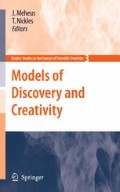Abstract
There have been many calls in recent years, from historians, philosophers, and sociologists of science, to be more attentive to the role of experimentation in the development of science. Allan Franklin’s complaint in 1986 about the “general neglect of experiment and the dominance of theory in the literature on the history and philosophy of science” (Franklin, 1986, p. 1) has been repeatedly cited and echoed (Le Grand, 1990, p. ix). Although earlier historical studies of experimental science are themselves neglected in some of these calls for a new start, there seems little doubt that in recent years there has been a shift in balance between an earlier emphasis on scientific thought and a current interest in scientific practice which highlights experimental practice.
Often those who reexamine experimentation in a historical setting focus on a single experiment, or a “crucial experiment” supported by a small set of “subsidiary” experiments. Certain experiments, such as the Michelson-Morley, or the Millikan oil drop experiment have achieved historical recognition approaching that of major theories. In 1981 the philosopher Rom Harré published a book entitled Great Scientific Experiments: 20 Experiments that Changed our View of the World. Harré was careful to point out that experiments are not “isolated events”, but “steps in a sequence of studies through which a delineated subject matter is explored” (Harré, 1981, p. 12). Nevertheless, in each case one experiment stands out as the climactic event, for which the preceding steps serve mainly as preparation.
Access this chapter
Tax calculation will be finalised at checkout
Purchases are for personal use only
Preview
Unable to display preview. Download preview PDF.
References
Boyle, R. (1662). New Experiments Physico-Chemical Touching the Spring of the Air, and its Effects. H. Hall, Oxford.
Chen, W. (1992). The laboratory as business: Sir Almroth Wright's vaccine programme and the construction of penicillin. In Cunningham, A. and Williams, P., editors, The Laboratory Revolution in Medicine, pages 245–292. Cambridge University Press, Cambridge.
Franklin, A. (1986). The Neglect of Experiment. Cambridge University Press, Cambridge.
Galison, P. (1987). How Experiments End. University of Chicago Press, Chicago.
Gruber, H. E. (1989). The evolving systems approach to creative work. In Wallace, D. B. and Gruber, H. E., editors, Creative People at Work, pages 3–24. Oxford University Press, New York.
Hacking, I. (1983). Representing and Intervening. Cambridge University Press, Cambridge.
Harré, R. (1981). Great Scientific Experiments; 20 Experiments that Changed our View of the World. Phaidon, Oxford.
Latour, B. and Woolgar, S. (1986). Laboratory Life: The Construction of Scientific Facts. Princeton University Press, Princeton.
Le Grand, H. E., editor (1990). Experimental Inquiries. Kluwer, Dordrecht.
Onions, C. T., editor (1973). The Shorter Oxford English Dictionary. Clarendon Press, Oxford.
Popper, K. R. (1961). The Logic of Scientific Discovery. Science Editions, New York.
Rheinberger, H.-J. (1997). Toward a History of Epistemic Things: Synthesizing Proteins in the Test Tube. Stanford University Press, Stanford.
Shapin, S. and Schaffer, S. (1985). Leviathan and the Air Pump: Hobbes, Boyle, and the Experimental Life. Princeton University Press, Princeton.
Shapiro, A. E. (1996). The gradual acceptance of Newton's theory of light and color, 1672–1727. Perspectives on Science, 4:68–89.
Author information
Authors and Affiliations
Editor information
Editors and Affiliations
Rights and permissions
Copyright information
© 2009 Springer Science+Business Media B.V.
About this chapter
Cite this chapter
Holmes, F.L. (2009). Experimental Systems, Investigative Pathways, and the Nature of Discovery. In: Meheus, J., Nickles, T. (eds) Models of Discovery and Creativity. Origins: Studies in the Sources of Scientific Creativity, vol 3. Springer, Dordrecht. https://doi.org/10.1007/978-90-481-3421-2_5
Download citation
DOI: https://doi.org/10.1007/978-90-481-3421-2_5
Published:
Publisher Name: Springer, Dordrecht
Print ISBN: 978-90-481-3420-5
Online ISBN: 978-90-481-3421-2
eBook Packages: Humanities, Social Sciences and LawPhilosophy and Religion (R0)

